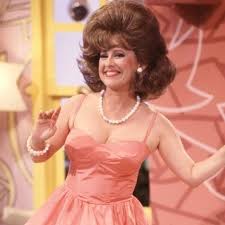Chichester Festival Theatre: A Deep Dive into Its History, Legacy, and Cultural Significance
Introduction
Chichester Festival Theatre (CFT) is a cornerstone of the British theatrical landscape, known for its high-quality productions, historical significance, and influential role in shaping modern theater. Located in the heart of Chichester, West Sussex, this iconic venue has been hosting world-class performances for decades. From its humble beginnings to its status as one of the most respected theaters in the UK, Chichester Festival Theatre has played a key role in British cultural life. This comprehensive analysis will explore the theatre’s history, key productions, building and design, cultural impact, and future ambitions.
History and Foundation of Chichester Festival Theatre
Origins and Early Years
The story of Chichester Festival Theatre begins in the 1950s, when the concept of creating a permanent theater in Chichester was first envisioned. Prior to this, the city had limited theatrical infrastructure, and the town’s residents had to travel to London or other major cities to experience high-quality live performances.
In 1957, the city’s local authorities and key cultural figures decided that Chichester needed its own professional theater. The project was championed by Leslie Evershed-Martin, the leader of Chichester’s District Council, and the renowned director Sir Laurence Olivier, who wanted to bring theater to the region and create a venue that would rival London’s West End.
The theatre opened in 1962, with its first production, The Recruiting Officer by George Farquhar, directed by Olivier himself. It was an immediate success, showcasing the theatre’s potential for world-class productions and establishing it as a new center for the arts in the South of England.
The Building and Design
The Chichester Festival Theatre is renowned not only for its performances but also for its architectural design. Designed by the architect Philip Powell, the building was constructed to blend seamlessly with the surrounding countryside while maintaining a sense of modernity. The venue is distinctive for its circular auditorium, which is surrounded by a stunning outdoor space, making the architecture a focal point of the Chichester cultural scene.
The most notable feature of the theatre is its 1,300-seat auditorium, which offers an intimate yet grand space for audiences. The theatre’s innovative design focuses on ensuring that each seat provides an unobstructed view of the stage, which enhances the overall experience of the performance. Additionally, the theatre’s large open-air stage area offers the opportunity for outdoor performances, contributing to the venue’s versatility and cultural relevance.
The venue has undergone several renovations over the years to modernize its facilities while preserving its unique design elements. The most significant redevelopment occurred in 2006, when a new wing was added to provide additional rehearsal space, dressing rooms, and backstage facilities.
Chichester Festival Theatre: Key Milestones
The 1960s – Establishing a Legacy
In the early years, Chichester Festival Theatre established itself as a premier venue for classical plays, particularly Shakespeare productions. The theatre’s inaugural performance was The Recruiting Officer, but it soon began to focus on reviving the works of William Shakespeare. Sir Laurence Olivier’s vision for the theatre was to present classical productions in a modern, accessible way. Throughout the 1960s, Chichester’s productions of Shakespeare’s works, such as Hamlet and Macbeth, set high standards for the theatre world.
In the mid-1960s, Chichester Festival Theatre’s productions began to attract prominent theater practitioners, including designers, directors, and actors. This led to the formation of an ensemble company that would help further establish the theatre as a respected hub for talent.
The 1970s – Expansion and Innovation
During the 1970s, the theatre expanded its programming to include more contemporary works. While Shakespeare remained a focal point, the theatre embraced modern playwrights such as Harold Pinter, John Osborne, and Alan Ayckbourn. Chichester’s willingness to experiment with both classical and contemporary works helped cement its reputation as an innovative and dynamic venue.
One of the theatre’s most significant productions during this period was the 1976 staging of The Crucible by Arthur Miller. Directed by Michael Blakemore, the production gained critical acclaim and showcased Chichester’s commitment to presenting challenging and thought-provoking works.
The 1980s and 1990s – A Hub for Talent
In the 1980s and 1990s, Chichester Festival Theatre became a launchpad for some of the biggest names in British theater. The venue continued its focus on high-quality performances and attracted top-tier talent from across the country. The theatre’s reputation for nurturing emerging talent led to a number of actors making their mark at Chichester before moving on to greater fame in London’s West End and international stages.
In 1989, the theatre was revitalized with the arrival of artistic director Sir Richard Eyre. Eyre’s tenure introduced even more groundbreaking productions, including a new version of King Lear starring Alec Guinness. This production was lauded for its unique interpretation and helped further establish the theatre as a cultural institution.
The 2000s – Expanding Reach
In the 2000s, the Chichester Festival Theatre embraced more diverse and experimental productions. New plays by contemporary playwrights were introduced alongside major revivals of classic works. This period also saw the development of partnerships with major arts organizations, including the National Theatre, allowing Chichester’s work to reach a broader audience.
The theatre also expanded its efforts to reach younger audiences, with the introduction of educational programs, workshops, and youth-focused productions. This helped build a new generation of theatergoers who would carry the theatre’s legacy forward.
Chichester Festival Theatre’s Influence and Cultural Impact
National and International Reach
Chichester Festival Theatre’s impact extends far beyond its home city. Over the years, many of its productions have been transferred to London’s West End and Broadway, furthering the theatre’s global reputation. Notable productions such as Les Liaisons Dangereuses (1985), Cabaret (1993), and The Life and Adventures of Nicholas Nickleby (2001) have enjoyed tremendous success, with some productions even going on to achieve critical acclaim and win prestigious awards.
The theatre’s ability to mix classical and contemporary works has allowed it to continue attracting international talent, including major figures from Hollywood, the West End, and Broadway. The performances produced at Chichester often have a lasting influence on the wider cultural landscape of theatre, music, and film.
Contributions to British Theatre
Chichester Festival Theatre has made a significant contribution to British theatre by introducing new works and fostering relationships with both emerging and established playwrights. The theatre has become a champion for nurturing talent and providing an environment for new ideas to flourish. Many young actors, directors, and designers got their start at Chichester, including notable names such as Hugh Bonneville, Richard Armitage, and Jenna Coleman.
The festival itself, held annually, has been a key part of the cultural calendar, attracting theatergoers from all over the country. The atmosphere of the festival and the variety of productions—ranging from modern plays to re-imagined classics—demonstrate the theatre’s versatility and commitment to showcasing diverse forms of live performance.
Productions at Chichester Festival Theatre
Chichester Festival Theatre has produced some of the most memorable works in British theater, often featuring well-known actors and directors. Some of the key productions that have shaped the theatre’s history include:
Les Liaisons Dangereuses (1985)
This production of Christopher Hampton’s adaptation of Pierre Choderlos de Laclos’ novel was one of the early successes that propelled Chichester Festival Theatre into the national spotlight. Starring a young Alan Rickman and Lindsay Duncan, the production earned critical acclaim and transferred to London’s West End.
Cabaret (1993)
A bold new interpretation of the classic musical, this production, directed by Sam Mendes, revitalized the genre of musical theater. The innovative staging and the cast’s stellar performances ensured the show’s success, both in Chichester and when it later moved to the West End.
The Life and Adventures of Nicholas Nickleby (2001)
This large-scale production of Charles Dickens’ novel was a landmark event for Chichester. With its sprawling narrative and ensemble cast, the show became one of the most ambitious productions the theatre had ever undertaken. Its success in Chichester led to a transfer to London, where it garnered widespread attention.
The Resistible Rise of Arturo Ui (2006)
Bertolt Brecht’s political play was given an innovative modern production by director Jonathan Kent. The play, which addresses the rise of fascism, was both timely and prescient, resonating deeply with contemporary audiences. It reinforced Chichester Festival Theatre’s commitment to producing thought-provoking works.
Education and Outreach Programs
Chichester Festival Theatre is not only a performance venue but also a vital part of the educational and cultural life of the region. Its outreach programs include theater workshops, community projects, and collaborations with local schools. These initiatives aim to engage young people with the arts, providing opportunities for learning, creativity, and self-expression.
The theater’s commitment to nurturing future generations of theatermakers is an integral part of its mission, helping to ensure the longevity and relevance of the arts within the local community.
Conclusion: The Future of Chichester Festival Theatre
As it looks to the future, Chichester Festival Theatre remains committed to its core values of artistic excellence, innovation, and cultural engagement. The theater continues to produce world-class theater, support new talent, and foster an appreciation for the arts within the community.
In the coming years, the theatre aims to expand its role as a beacon of cultural creativity, with ongoing initiatives that bring theater to new audiences and provide opportunities for young people to experience the magic of live performance. With a legacy built on artistic brilliance and a forward-thinking approach to the future of theater, Chichester Festival Theatre is set to remain a vital and influential part of the British cultural landscape for years to come.






